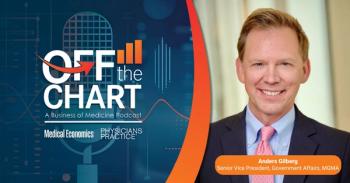
‘The Patient I Wish I’d Never Met’
Plastic surgeon Suzanne Kim Doud Galli on how an ordinary nose job turned into the worst case of her career.
Nothing seemed out of the ordinary when the patient first presented to my office with complaints of nasal obstruction. He was a tall, handsome 22-year-old Asian male with septal deviation, enlarged turbinates, an old nasal fracture, and nasal valve collapse - all findings I encountered daily in my facial plastic and reconstructive surgery practice. This guy had recently graduated from college, and he wanted to have surgery before looking for a job. I met with him several times and he seemed reasonable.
The operation to reconstruct his nose took more than three hours. His insurance had approved the procedure and I deferred the surgical deposit since he was practically a student.
In the early postoperative period, he was happy with the surgery and pleased that he was breathing better. I saw him after one, two, and four weeks. At week six, his nose still had a fair bit of swelling. I reassured him and told him the swelling was normal. I reminded him that it would take at least a year to fully recover from the surgery. He did not show up for his three-month postoperative appointment and I did not hear from him. However, when his insurance company stalled on the payment, and he received a bill from my office at the six-month mark, he returned, morphed into the unhappy patient.
In the months that followed, he had an endless list of complaints both functional and aesthetic. He saw six other surgeons in the area to voice his plight: one suggested immediate surgery, if he forked over $8,000.
He spent hours in my office, alternating between crying and bullying me and my staff. We went over every graft in his nose. We dissected the minute details of the operative report. We compared every photograph I ever took of him. Yet he was noncompliant with all of my instructions. Then he bombarded me with harassing e-mails and demands.
He was often rude and disrespectful. He was unemployed and lived with his parents, but even when I suggested that he bring them to his appointments (hoping their presence might temper his behavior), he always came to my office alone. He cried that his life “sucked,” that he spent all of his time sitting in his room at home. For this, he blamed me: I had ruined his life and his hopes for a singing career, an aspiration he’d never mentioned before surgery.
I suggested he was depressed. He suggested I pay him for all the months of suffering he had endured. I reminded him that I had never been reimbursed for my surgical services. He demanded an apology from me for what I had done to him, but I told him I had done nothing wrong and was sorry only that the situation was so difficult for him.
In the meantime, I showed his picture to my family, my staff at home, and the staff of the other doctors I worked with. I began avoiding the parking garage and staircases. One day, I found a package from him on the front desk of our locked office. In it was a three page, single spaced diatribe from him, which began with “you said you wanted me to be happy,” outlined all his grievances, and ended with something about his friends telling him he needed to “do something” about it. I called my lawyer and my malpractice company. I dismissed him from the practice. Shortly thereafter, he called the office and, by chance, I answered the telephone. He talked in circles and when I tried to cut him off, he told me: “Don’t worry, I’m never going to hurt you.”
That was a year ago.
After this experience, I discussed the case with one of my mentors, who writes and lectures often on the “unhappy rhinoplasty patient.” I also attended several lectures on dealing with unhappy patients in facial plastics. I went over my office notes and thought back to the conversations I’d had with this patient preoperatively. Had I missed body dysmorphic disorder? Was secondary gain the real issue? Did this guy have some psychosexual problem? Should I have taken more notice that he was always alone, even on the day of surgery? Should I have tried harder to persuade him to bring a parent to at least one of his preoperative visits?
Even now, a year later, I can’t say what exactly I would have done differently in this case. Still, I learned a lot from this experience. I spend even more time preoperatively with rhinoplasty patients. I review photographs at least three times and I go over every detail of the surgery and postoperative healing process.
I also look over my shoulder when I’m going down the stairwell in the parking garage.
Suzanne Kim Doud Galli, MD, PhD, is a board-certified facial plastic and reconstructive surgeon in Washington D.C who focuses on functional rhinoplasty and Asian cosmetic surgery. She is a graduate of Smith College and the State University of New York. She completed her training at New York University and the University of Toronto.
This article originally appeared in the November 2009 issue of Physicians Practice.
Newsletter
Optimize your practice with the Physicians Practice newsletter, offering management pearls, leadership tips, and business strategies tailored for practice administrators and physicians of any specialty.









